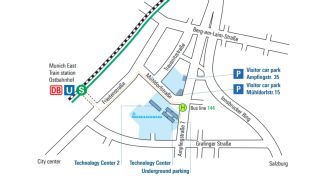Beyond the Scalpel: Empowering Surgeons with AI-powered networked Robotics
Prof. Stefanie Speidel, TU Dresden
Advanced surgical technologies, such as digital ORs and robotics, generate vast data for enhancing patient care, yet their real-time use still relies heavily on surgical staff experience. This talk explores AI-powered robotic surgery and the analysis of intraoperative data to enable real-time human-machine collaboration and remote surgery. By quantifying surgical experience and making it accessible to machines, we aim to democratize surgical skills and optimize therapy along the entire treatment path.
Stefanie Speidel is a professor for “Translational Surgical Oncology” and director at the National Center for Tumor Diseases Dresden since 2017 as well as one of the speakers of the DFG Cluster of Excellence CeTI and the Konrad Zuse AI school SECAI. She received her PhD from Karlsruhe Institute of Technology in 2009 and had a junior research group “Computer-Assisted Surgery” from 2012 – 2016. She is an elected MICCAI board member and fellow, has co-authored 150+ publications, organizes key workshops and challenges, and has served as general as well as program chair for major international conferences including IPCAI and MICCAI. Her research focuses on machine learning for image- and robot-assisted surgery.























